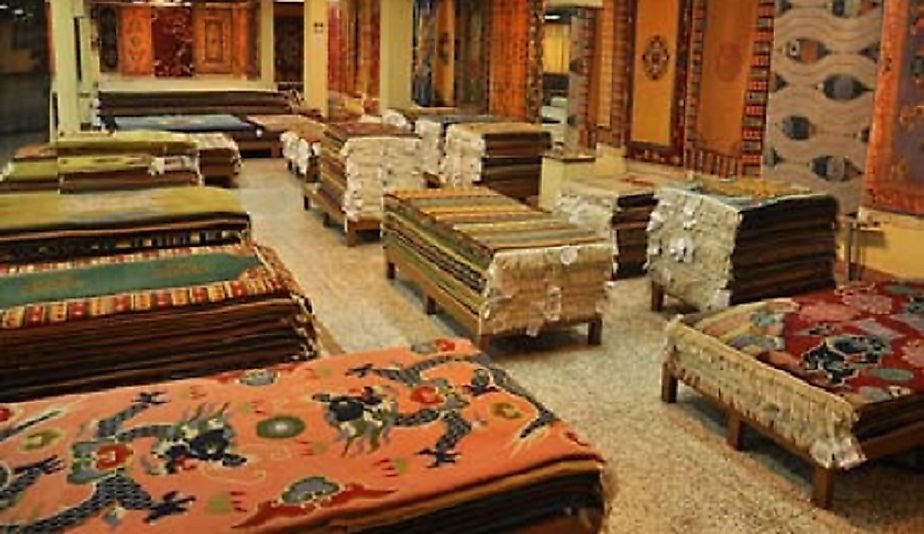Exporting Nations Who Depend Most On Developing South Asian Economies

Among those making this list, the two South Asian countries of Nepal and Afghanistan, and Tajikistan from Central Asia, as well as Gambia, Benin, Tanzania, Mali, and Guinea from Africa, actually import more than they export. Kuwait and Iraq, meanwhile, from the Middle East are major net exporters in the world, and in fact Kuwait ranks as the eighth largest exporter. While exports from Iraq are worth twice as much as its imports. The countries exporting to south Asia include some of the richest (Kuwait) and one of the poorest (Mali) countries in the world.
Important Trade Relationships Within And Beyond South Asia
Nepal is a landlocked country in the lowland Terai region. Agriculture is the most important sector providing employment to 70% of its people. However, lack of regular monsoons keeps the economic growth down to 4%. Exports amounting to 62.1% go to south Asian countries, with its export to neighboring India alone amounts to 61.2%. United States, Germany, UK, and China are the other major importers of goods from Nepal. The top exports of Nepal are carpets, synthetic yarn and fabrics, and iron.
Afghanistan is one of the least developed countries of the world, with 35% of its population being unemployed. After the various terrorists groups were contained, and with the help of foreign investment since 2002, the country has managed to develop its economy. Its exports to neighbors India and Pakistan make up 59.8% of its exports, the others are to another neighbor, Tajikistan, as well as China, Iran and Turkey. The major exports are mainly agricultural or traditional goods, including opium poppies, fruits (especially grapes), nuts, cotton, wool, hides and pelts, Afghan rugs, gemstones, scrap iron, and coal briquettes.
Gambia has few natural resources, so services provide employment to 58% of people there, while agriculture and industry provide employment to 33% and 8.7%, respectively. Tourism is one of its important industry. It exports, peanuts and peanut products, fish, cotton lint, palm kernels, artificial fabrics, scrap iron, and fuel wood. Among the 33.1 % export to south Asian countries, 23.2% goes to India. China takes in a another whopping 57% of its exports. Mali, Guinea and neighboring Senegal are other significant importers.
Benin in Africa is underdeveloped and depends heavily on agriculture. Cotton alone accounts for 40% of its Gross Domestic Product (GDP), and 70% of its exports. Textiles from other yarns, cashews, shea butter, palm products, seafood, coconuts, petroleum, gold and rough wood are its other exports. 27% of its exports go to south Asian countries, primarily to India. Other importers are China, Sierra Leone, Gabon and its neighbor Burkina Faso.
Mali ranks as one of the ten poorest countries in the world. Subsistence agriculture is its main economic driver, and most of its population lives in rural areas. Cotton and livestock account for up to 80% of its exports. Gold which makes up a third of its export, has always been a major revenue earner. Oil seeds, mineral and chemical fertilizers and iron ore are its other important exports. Of the 25.4% of export to south Asia, most goes to India. Switzerland, China, Bahrain, and Vietnam are its other major importers.
Other Countries Exporting to South Asia
Tanzania, Guinea, Kuwait, Tajikistan, and Iraq send 20.9%, 19.4%, 18.8%, and 18.5% of their exports to South Asia, respectively. Tanzania exports gold, tobacco, precious metals, copper, and oil-seeds to India, South Africa, China, Kenya and Japan. Guinea exports gold, petroleum, aluminium, postage stamps and nuts to South Korea, India, Ghana, the United Arab Emirates, and Spain. Kuwait exports oil and fertilizers to South Korea, China, India, Japan, USA, Pakistan and Singapore. Tajikistan exports aluminium, electricity, cotton, fruits, vegetable oil, and textiles to Afghanistan, Kazakhstan, Turkey, Switzerland, Italy, and Algeria. Iraq exports petroleum, gold, tropical fruits and sheep hides to China, India, the USA, South Korea and Greece.
Leaders in Trade in South Asia
India is the leading trade partner in this region and imports from nine countries in this list, with the only exception being Tajikistan. Pakistan and Afghanistan are the other countries from this region that are major importers from these ten countries.
Countries Whose Exports Depend On South Asian Developing Economies
| Rank | Country | % of Merchandise Exports Going To Developing South Asian Nations |
|---|---|---|
| 1 | Nepal | 62.1% |
| 2 | Afghanistan | 59.8% |
| 3 | Gambia | 33.1% |
| 4 | Benin | 27.0% |
| 5 | Mali | 25.4% |
| 6 | Tanzania | 21.5% |
| 7 | Guinea | 20.9% |
| 8 | Kuwait | 19.4% |
| 9 | Tajikistan | 18.8% |
| 10 | Iraq | 18.5% |







